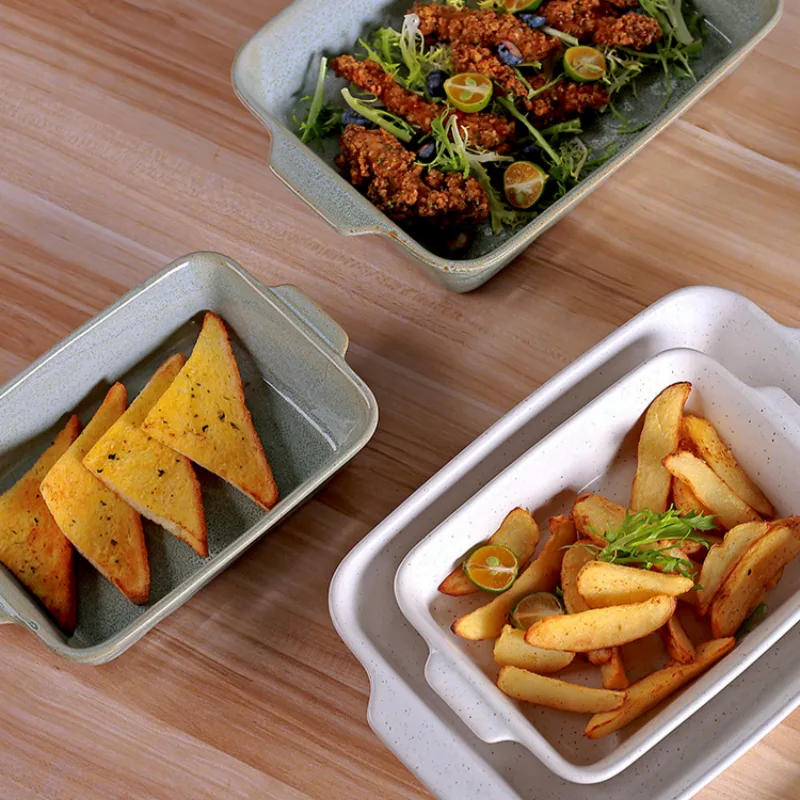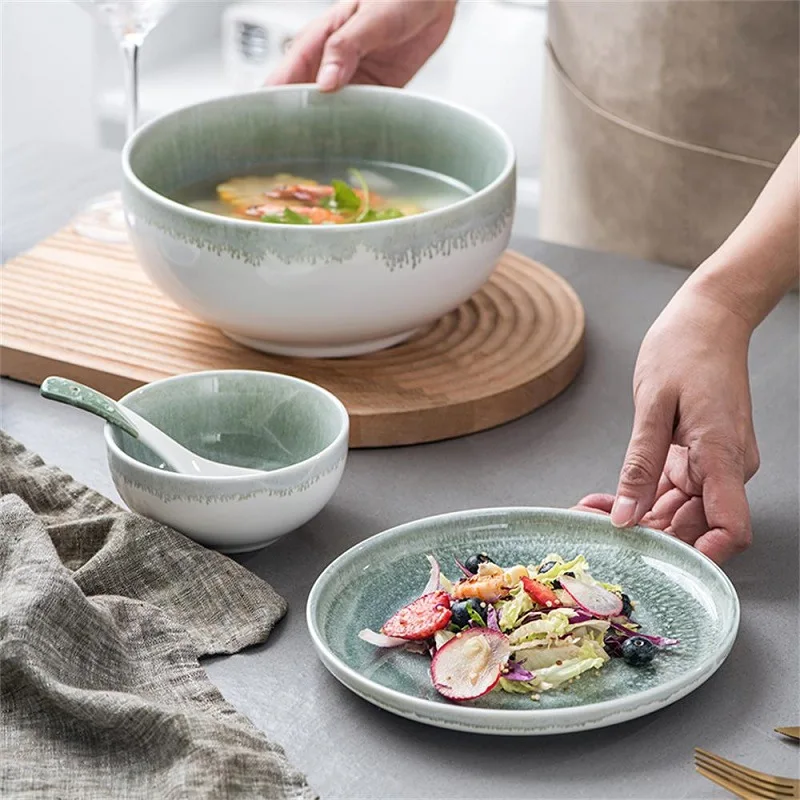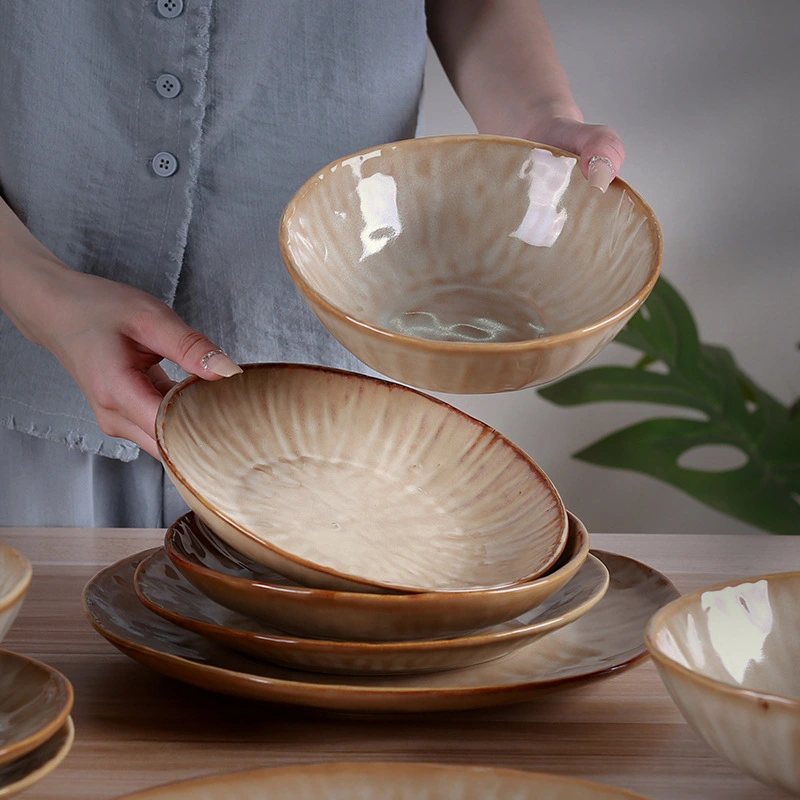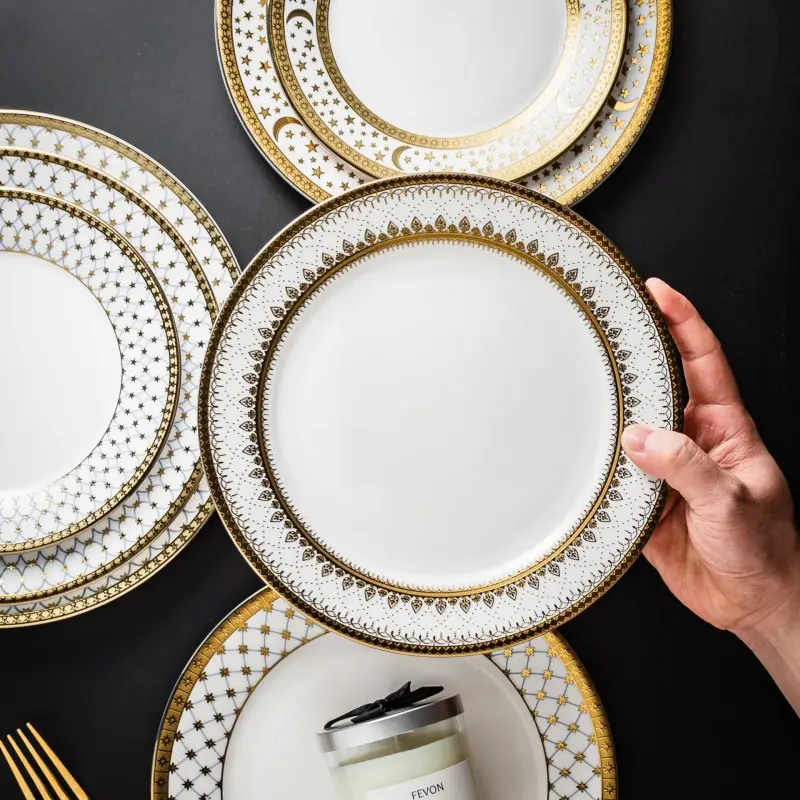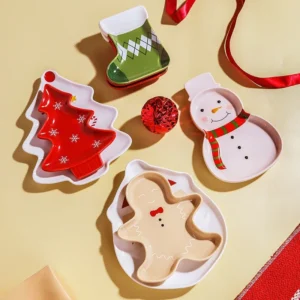Three meals a day are not only a necessity for survival, but also a reflection of the quality of life; The most beautiful thing is when delicious food meets carefully selected beautiful tableware, satisfying both taste buds and the soul.
Three meals a day are not only a necessity for survival, but also a reflection of the quality of life; The most beautiful thing is when delicious food meets carefully selected beautiful tableware, satisfying both taste buds and the soul.
Ceramic tableware not only has practical value, but also artistic value. It is made by mixing clay or mixtures containing clay, with diverse shapes, colorful colors, and a cool and smooth feel, and is deeply loved by families.
1、 What are the types of ceramic tableware?
Generally speaking, ceramic tableware is divided into five categories, namely shell porcelain tableware, reinforced porcelain tableware, magnesium porcelain tableware, magnesium reinforced porcelain tableware, and colored glazed porcelain tableware. Different ceramic tableware has different characteristics, so when choosing, it is important to understand the advantages and disadvantages of different types of ceramic tableware:
(1)Magnesium porcelain tableware
Magnesium porcelain is mainly made of talc rich in magnesium as the main raw material, which has outstanding characteristics such as high whiteness, high strength, and high thermal stability. Its pure white, crystal clear and moist characteristics make it the best choice for tableware. In addition, ceramic tableware has the properties of acid and alkali resistance, lead-free toxicity, and easy washing, making it more suitable for modern households.
(2)Magnesium reinforced porcelain tableware
Magnesium reinforced porcelain tableware is made from magnesium stone powder as the main raw material, which has the advantages of high strength, low brittleness, high whiteness, and smooth glaze. It is also an ideal product for disinfecting tableware. But magnesium reinforced ceramic tableware is more valuable than magnesium ceramic tableware, mainly due to its longer service life, lower damage rate, higher grade, and better image.
(3) Reinforced porcelain tableware
Reinforced porcelain is made by firing high-quality ceramic clay with aluminum and magnesium, and has the characteristics of durability, impact resistance, and delicate hand feel. But the reinforced porcelain is dull and not very aesthetically pleasing, and has gradually been replaced by magnesium reinforced porcelain and magnesium porcelain.
(4) Beizhi porcelain tableware
Beizhi porcelain is made by high-temperature firing of high white clay and shell powder, and has the characteristics of non-toxic, lead-free, harmless, and never fading. It is suitable for users of medium and low-end ceramic tableware to choose from.
(5) Color glazed porcelain tableware
Colored glazed porcelain is made by high-temperature firing and belongs to underglaze colored ceramics. It is a tableware product with a different style from other ceramics and is the best choice for users who like special tableware.
Most of the ceramics used in Myoung Ceramics Factory are the first three types, which have the characteristics of durability, safety, non toxicity, and beautiful and exquisite appearance.
2、 Quality standards for ceramic tableware
(1) Appearance quality standard: Appearance quality is an important indicator for product grading. The current product standards in China classify products into three categories: superior products, first-class products, and qualified products. Excellent products are equivalent to the international advanced level, first-class products are at the domestic advanced level, and qualified products are at the domestic general level. The appearance quality of high-quality products has basically reached no spots, no falling slag, no color dirt, no pinholes, no glaze scratches, and minimal deformation. First grade and qualified products have more lenient requirements in allowing defects than superior products The quality standards for Mingyang ceramics exports are superior and first-class products.
(2) Lead and cadmium leaching standards: These are important safety and health indicators for ceramic products. The presence of lead and cadmium is due to the presence of their components in ceramic pigments in the decorative patterns on the surface of the product. The presence of lead may also be due to the addition of lead components to lower the firing temperature of the surface glaze of the product. If the production process is not properly controlled, it is highly likely to cause excessive leaching of lead and cadmium during use, and frequent use of such products can easily lead to heavy metal poisoning caused by lead and cadmium. For Mingyang Ceramics, you don’t have to worry about safety issues. Our ceramic tableware is free of heavy metals such as lead and chromium, safe and odorless, and can be used in household appliances such as microwaves, ovens, dishwashers, etc.
(3) Thermal stability standard: Thermal stability refers to the absence of cracks or damage to a product during cold and hot exchange. The quality of thermal stability can reflect the service life of ceramic products (generally up to 2-3 years or more), and the larger the temperature difference between cold and hot exchange, the longer their service life. The standard generally stipulates heating to 180 ℃ and then adding it to 20 ℃ water, taking it out and observing for any damage
Product image detail display
3、 How to choose ceramic tableware?
1. “Look”, do not use bowls with flaws. Pick up the bowl and aim it at the light. Under the illumination of the light, any flaws on the bowl can be clearly seen. If there are bubbles, protrusions, or uneven bottoms on the bowl, it is usually a defective product.
2. “Touch”, whether the surface is rough or smooth. When buying a bowl, feel it with your hand. If the surface of the bowl is rough and uneven, it is a relatively poor quality bowl, and we do not recommend companies to purchase it. In addition, you can touch the pattern on the bowl. If it is raised, it is glazed, and it is not recommended to use this type of bowl.
3. “Listen” means to hear the sound made when lightly tapping porcelain. If the sound is crisp and pleasant to the ear, it indicates that the porcelain body is fine and dense, without cracks or damage. When fired at high temperatures, the porcelain is completely melted. If the voice is hoarse, it can be concluded that the porcelain body is cracked or not fully vitrified. This type of porcelain is prone to cracking due to changes in temperature and heat.
4. ‘Comparison’ means comparing. For matching porcelain, it is necessary to compare the various accessories to see if their shapes and decorative elements are coordinated and consistent.
Myoung Ceramics has summarized a quality inspection suggestion based on past experience: place the bowl on the table and check if the rim is flat and if there are any curling issues. In addition, if bowls of the same type are stacked together and can fit tightly between each other, it indicates that the quality of the bowl is relatively good and belongs to high-quality bowls.
4、 Precautions for using ceramic tableware
Although ceramic tableware is both beautiful and useful, it is important to be careful when using it, otherwise it can easily be damaged. The following matters need to be noted:
(1) Be careful of ceramic bowls and plates with painted inner walls
Ceramic tableware contains heavy metal elements such as lead, mercury, and cadmium, which can easily cause liver poisoning and kidney sclerosis. These harmful metals mainly come from the painted inner walls, so the more glaze on ceramics, the more compounds such as lead and cadmium. When using ceramic tableware, do not use bowls or plates with painted inner walls to hold rice or soup, and try not to heat them in the microwave.
(2) Underglaze colored porcelain is the safest
Because the underglaze color is coated with pigment first, there is no need to add lead to the pigment, while the underglaze color is coated with glaze and then coated with pigment, which contains lead. Compared to underglaze color, underglaze color pigments are less likely to precipitate and are relatively safer. It is recommended to purchase and use them. Before use, clean it with hot water and soak it in vinegar to filter out harmful metal substances.
(3) Microwave heating to avoid metal decorations
If ceramic tableware must be heated in the microwave, be careful not to use metal decorated ceramic tableware, as ceramic tableware with metal edges will release toxic substances when heated in the microwave.
Conclusion
Although ceramic tableware is beautiful and useful, it involves our physical and mental health, and the details of purchasing and selecting should not be overlooked. When purchasing household ceramic tableware, it is difficult to see at a glance that the best way is to purchase legitimate products through legitimate channels. Myoung Ceramics has over a decade of experience in producing ceramic tableware, with strict control over quality and safety. Its products are highly favored by corporate buyers, and we welcome. inquiries and orders from everyone


